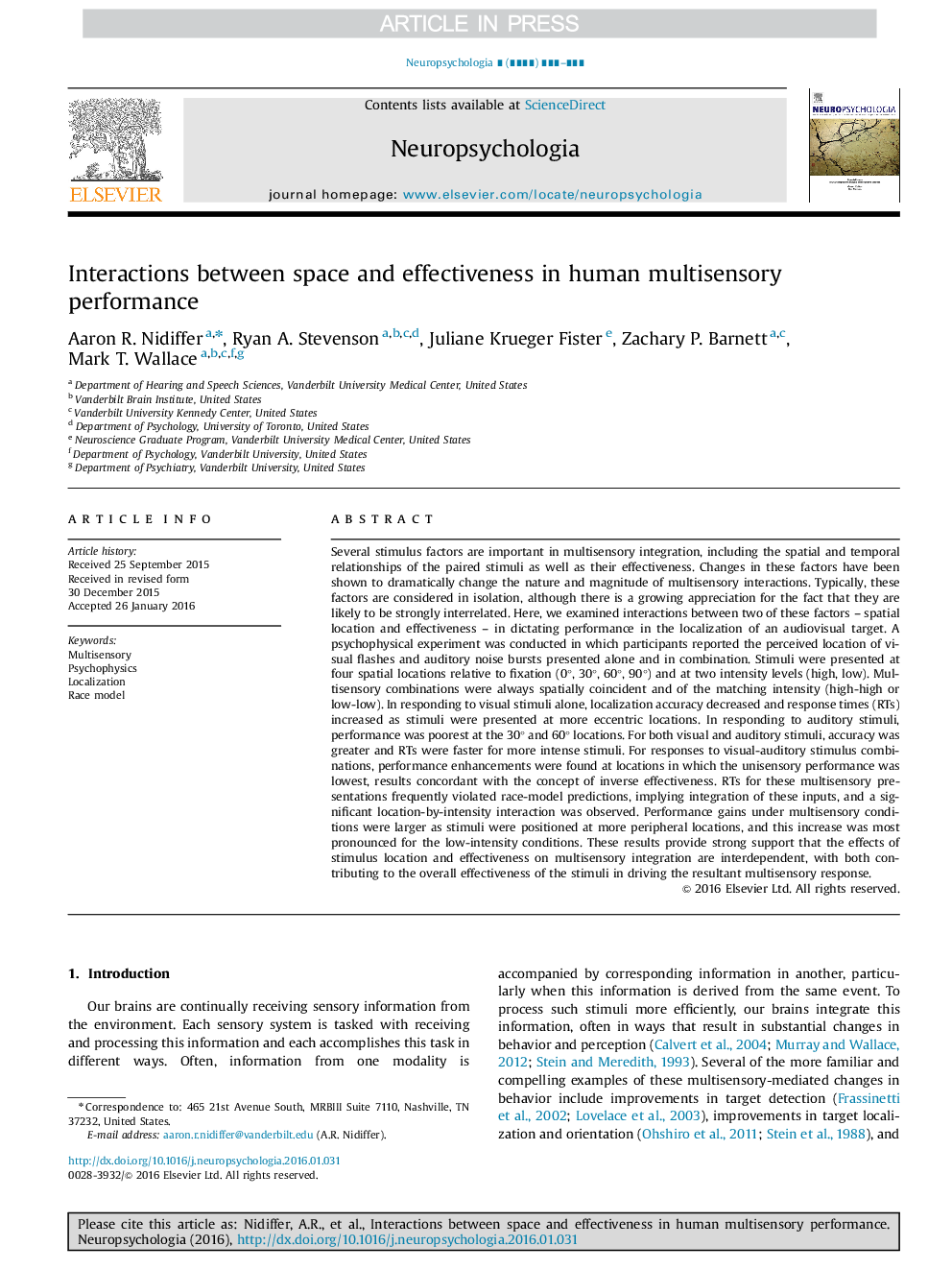| کد مقاله | کد نشریه | سال انتشار | مقاله انگلیسی | نسخه تمام متن |
|---|---|---|---|---|
| 7318837 | 1475566 | 2016 | 9 صفحه PDF | دانلود رایگان |
عنوان انگلیسی مقاله ISI
Interactions between space and effectiveness in human multisensory performance
ترجمه فارسی عنوان
تعاملات بین فضا و اثربخشی در عملکرد چند نفره انسان
دانلود مقاله + سفارش ترجمه
دانلود مقاله ISI انگلیسی
رایگان برای ایرانیان
کلمات کلیدی
چند منظوره، روانپزشکی، بومی سازی، مدل مسابقه
موضوعات مرتبط
علوم زیستی و بیوفناوری
علم عصب شناسی
علوم اعصاب رفتاری
چکیده انگلیسی
Several stimulus factors are important in multisensory integration, including the spatial and temporal relationships of the paired stimuli as well as their effectiveness. Changes in these factors have been shown to dramatically change the nature and magnitude of multisensory interactions. Typically, these factors are considered in isolation, although there is a growing appreciation for the fact that they are likely to be strongly interrelated. Here, we examined interactions between two of these factors - spatial location and effectiveness - in dictating performance in the localization of an audiovisual target. A psychophysical experiment was conducted in which participants reported the perceived location of visual flashes and auditory noise bursts presented alone and in combination. Stimuli were presented at four spatial locations relative to fixation (0°, 30°, 60°, 90°) and at two intensity levels (high, low). Multisensory combinations were always spatially coincident and of the matching intensity (high-high or low-low). In responding to visual stimuli alone, localization accuracy decreased and response times (RTs) increased as stimuli were presented at more eccentric locations. In responding to auditory stimuli, performance was poorest at the 30° and 60° locations. For both visual and auditory stimuli, accuracy was greater and RTs were faster for more intense stimuli. For responses to visual-auditory stimulus combinations, performance enhancements were found at locations in which the unisensory performance was lowest, results concordant with the concept of inverse effectiveness. RTs for these multisensory presentations frequently violated race-model predictions, implying integration of these inputs, and a significant location-by-intensity interaction was observed. Performance gains under multisensory conditions were larger as stimuli were positioned at more peripheral locations, and this increase was most pronounced for the low-intensity conditions. These results provide strong support that the effects of stimulus location and effectiveness on multisensory integration are interdependent, with both contributing to the overall effectiveness of the stimuli in driving the resultant multisensory response.
ناشر
Database: Elsevier - ScienceDirect (ساینس دایرکت)
Journal: Neuropsychologia - Volume 88, 29 July 2016, Pages 83-91
Journal: Neuropsychologia - Volume 88, 29 July 2016, Pages 83-91
نویسندگان
Aaron R. Nidiffer, Ryan A. Stevenson, Juliane Krueger Fister, Zachary P. Barnett, Mark T. Wallace,
